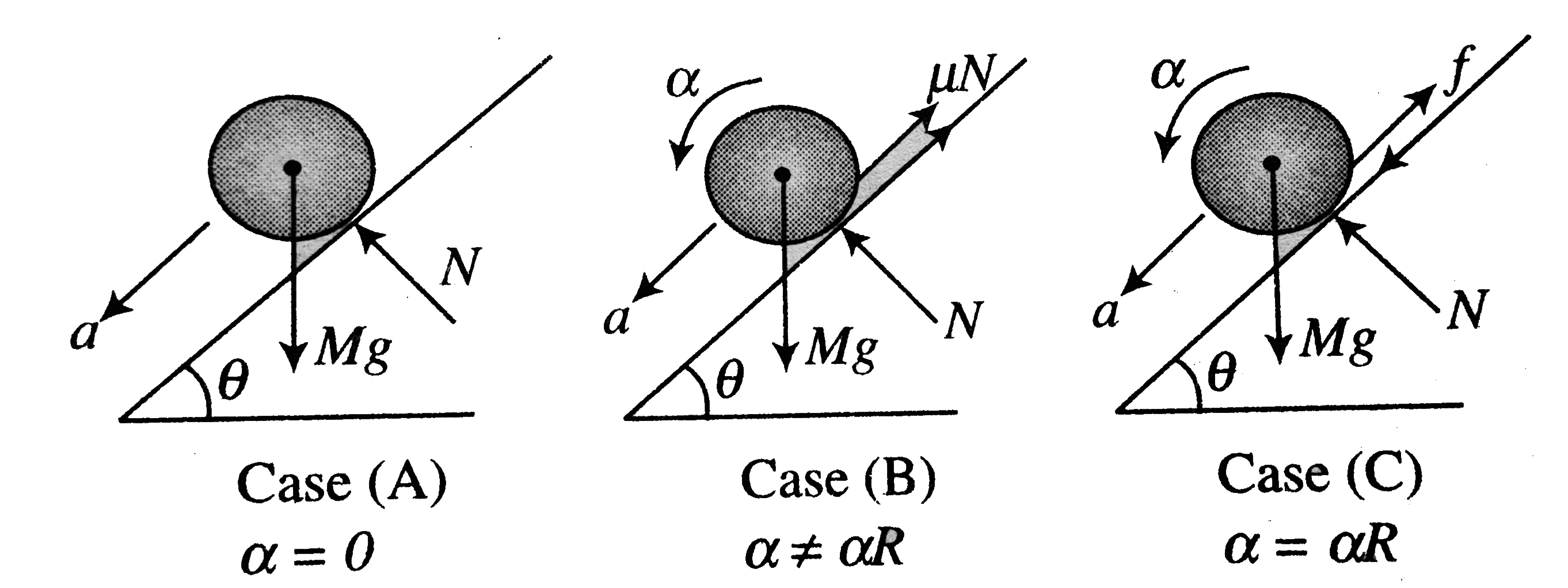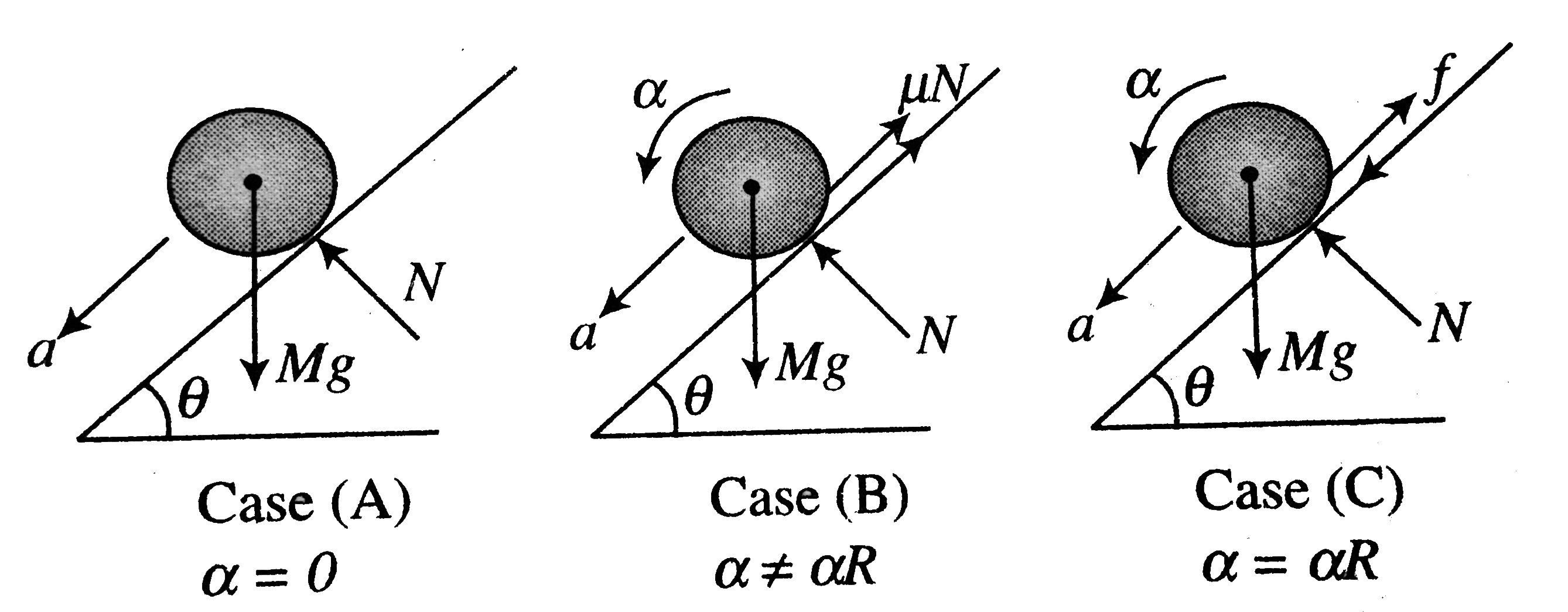In this passage a brief idea is given of the motion of the rolling bodies on an inclined plane. We will consider three cases: objects are released on an incline plane
Case-A: which is smooth.
Case-B: where friction is insufficient to provide pure rolling.
Case-C: where friction is sufficient to provide pure rolling. Force diagram for three cases are as follows: (where symbols have their usual meanings)

If the four objects given in the above question are of same mass, same radius having the same friction coefficient and are released from the same height, then at the bottom the object which will have least kinetic energy for case B will be the:
hollow sphere
solid sphere
ring
disc
The correct Answer is:C
From passage for case c
μmin=tanθ(k2R2)(1+k2R2)→(pure rolling)
Putting the values of k for different objects given in the table (in passege) we get
μmin(ring)=tanθ2
μmin(Disc)=tanθ3,μmin(solid sphere)=23tanθ
μmin(Hollow sphere)=27tanθ
⇒μmin(Ring), is greater than either of
μmin(Ring),μmin(Solid Sphere),μmin(Hollow sphere)
Therefore, the pure rolling of ring will confirm pure rolling of all other bodies.
Topper's Solved these Questions
- RIGID BODY DYNAMICS 2BOOK - CENGAGE PHYSICS ENGLISHCHAPTER - RIGID BODY DYNAMICS 2EXERCISE - Integer
7 Videos
- RIGID BODY DYNAMICS 2BOOK - CENGAGE PHYSICS ENGLISHCHAPTER - RIGID BODY DYNAMICS 2EXERCISE - Fill In The Blanks
7 Videos
- RIGID BODY DYNAMICS 2BOOK - CENGAGE PHYSICS ENGLISHCHAPTER - RIGID BODY DYNAMICS 2EXERCISE - Multiple Correct
26 Videos
- RIGID BODY DYNAMICS 1BOOK - CENGAGE PHYSICS ENGLISHCHAPTER - RIGID BODY DYNAMICS 1EXERCISE - Integer
11 Videos
- SOUND WAVES AND DOPPLER EFFECTBOOK - CENGAGE PHYSICS ENGLISHCHAPTER - SOUND WAVES AND DOPPLER EFFECTEXERCISE - Integer
16 Videos
Similar Questions
In this passage a brief idea is given of the motion of the rolling bodies on an inclined plane. We will consider three cases: objects are released on an incline plane
Case-A: which is smooth.
Case-B: where friction is insufficient to provide pure rolling.
Case-C: where friction is sufficient to provide pure rolling. Force diagram for three cases are as follows: (where symbols have their usual meanings)

Two children A and B use bicycles, having wheels of ring type and disc type respectively. During a race, bicycles are given the same velocity from the bottom of the inclined bridge to ascend the bridge without pedalling, then (assuming pure rolling).
View SolutionWork done by friction in case of pure rolling
View Solution
Knowledge Check
When a body starts to roll on an inclined plane, its potential energy is converted into
ATranslational kinetic energy onlyBTranslational and rotational kinetic energyCRotational energy onlyDNone
If a solid cylinder rolls down an inclined plane, then its:
View SolutionA solid sphere is in pure rolling motion on an inclined surface having inclination θ
View SolutionA body is rolling down an inclined plane. Its acceleration will not depend on the following:
View SolutionWhen a sphere rolls down an inclined plane, then identity the correct statement related to the work done by friction force.
View SolutionA solid cylinder is rolling down a rough inclined plane of inclination θ. Then
View SolutionWhen a body rolls without sliding up an inclined plane the frictional force is :
View SolutionIn case of pure rolling what will be velocity of point A of the ring of radius R ?

View Solution
